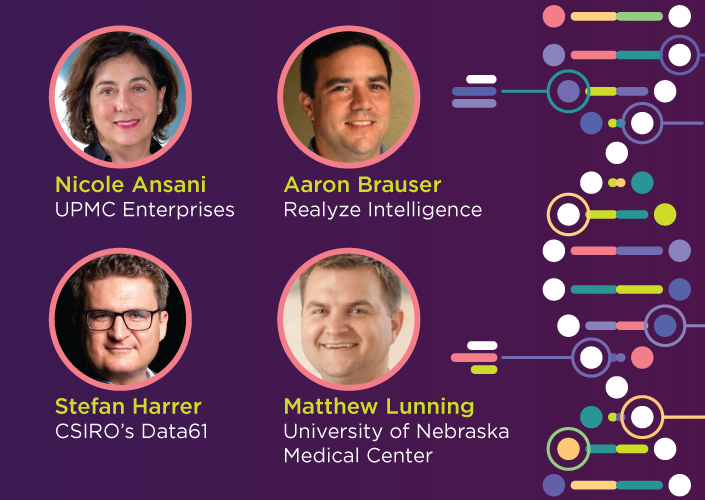Health systems have more data about their patients and operations than ever before. They must harness it to make improvements for health outcomes, efficiency and costs, webinar panelists say
Digital transformation is taking health systems from being reactive, disjointed, myopic and clinician-centered to organizations that are predictive, collaborative, aware and patient-centered.
These changes are the hallmarks of a real-time health system, said Barry Runyon, Vice President of Research at Gartner.
Watch the webinar:
“The real-time health system is a response to the current state of the health care provider,” Mr. Runyon said during “The Demands of a Digital Future” webinar, which was organized by the Center for Connected Medicine (CCM). The CCM, which is jointly operated by Nokia and UPMC, convenes thought leaders to discuss top issues in digital health.
Collection of vast amounts of data, along with rapid adoption of advanced technologies are driving the era of the real-time health system, which is likely to be mainstream in health care “in the next five to 10 years,” Mr. Runyon said.
“Just as a car is rapidly becoming a computer with wheels, the hospital is becoming a smart machine with beds,” Mr. Runyon said.
Runyon was one of three panelists to present during “The Demands of a Digital Future,” a webinar that explored transformative technologies at health care systems.
Also presenting:
- Srinivasan Suresh, MD, MBA, Chief Medical Information Officer of UPMC Children’s Hospital of Pittsburgh.
- Chris Janson, Senior Product Marketing Manager of Optical Networks at Nokia.
eBook download: Key takeaways from The Demands of a Digital Future
Dr. Suresh said UPMC Children’s Hospital of Pittsburgh, one of the nation’s top pediatric hospitals, has taken many steps on its digital transformation journey, including using machine learning to develop a readmission risk predictor and creating clinical decision support tools that use natural language processing technology.
“From the hospital’s perspective, when we look at our 10-year strategic plan, one of those strategic goals is centered on digital health where we aim to reinvent primary care pediatrics with a focus on population health and chronic disease,” Dr. Suresh said.
The tools have allowed UPMC Children’s Hospital of Pittsburgh to intervene earlier to prevent unnecessary hospital readmissions and reduce unneeded utilization inside the utilization – all of which bring higher value to the patient, Dr. Suresh said.
Higher network performance required
Mr. Janson explained that the influx of data in health care is creating demand for more than just greater bandwidth on networks. Health systems also require greater performance from their networks as they process and analyze more data from multiple sources.
“Fundamentally this is more than just about bandwidth,” Mr. Janson said. “We need to also think about performance in terms of latency, agility, scalability and security.”
Increasingly these requirements translate into the adoption of a network that connects traditional data centers owned by health systems with private and hybrid cloud resources. For example, Nokia built a private cloud and optical network that connects dozens of hospitals and other clinical sites at UPMC, which is one of the nation’s largest integrated health systems.
Also, read more about digital transformation in health care and what leaders need to know as they prepare for the era of the real-time health system on Nokia’s blog: Evolving healthcare networks for digital transformation.
eBook download: Key takeaways from The Demands of a Digital Future



